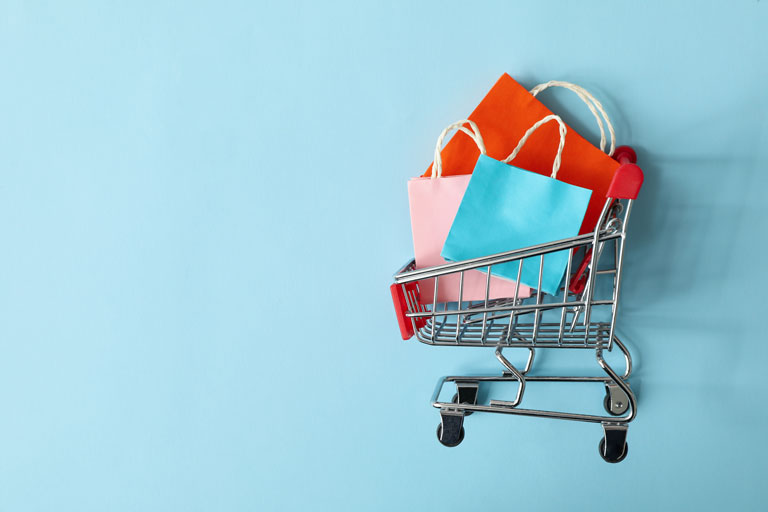2024 is fast approaching and in the coming year, many businesses are looking to eliminate abandoned carts and lost sales. And while there are a myriad of factors creating this dilemma, one of them relates to how customers can or cannot finance their intended purchase. What if there was a way to split up their purchase into smaller payments? Of course, as you might guess, there is.
Why Digital Shoppers Abandon Their Carts
Let’s take a look at why shoppers abandon their carts in digital shopping venues. In the realm of eCommerce, cart abandonment across all industries is as high as 69.57%, resulting in $4 trillion in money left on the table.
While it’s true that around 59% of consumers had no intention of completing a purchase, there are plenty of other reasons why shoppers aren’t crossing the finish line. Around 61% of polled shoppers will abandon their carts if they have to pay for shipping. Another poll found the same percentage of polled consumers abandon their carts because they don’t see trust badges on the site. And around 37% of buyers will search out a more streamlined shopping process if they are asked to make an account; related findings point to as many as 21% of shoppers leaving a site because checkout is too complex.
As you can see, while some of these factors relate to convenience and trust, the most significant portion relates to hidden or unexpected costs. Oftentimes, this is not an issue of feeling deceived as much as it is an issue with the new total cost of the item.
In an interestingly related statistic, around 81% of consumers abandon their cart once they start adding items. What this points to is some indecisiveness tied to limitations around spending power. But keep in mind, there are ways you can help recover customer abandoned carts.
Why It’s More Difficult to Lose In-Person Sales
As mentioned, while it’s harder to track down abandoned cart rates for in-person shopping, there are some common sense conjectures we can make about why it’s more difficult for consumers to abandon their purchases once they get to the register.
One is that there will be no hidden costs since the item is not being shipped. There will be no lengthy checkout process that involves making an account. It can also be a source of embarrassment for a customer to abandon an item because the total of all their items is too high. But as they say…never say never…and as they also say…the times are changing.

Why Consumers Prefer In-Person Shopping Experiences
But brick-and-mortar stores are well positioned to pick up the cash that eCommerce shoppers leave on the table. The same poll found that consumers are more than twice as likely to make a big purchase ranging from $101 to $250 in person; they are three times more likely to make an impulse purchase; nearly 20% of in-store purchases are unplanned, resulting in $558 billion in potential revenue.
Studies have shown that many consumers actually prefer shopping in person, although the exact reasons why vary by demographic. Women shoppers prefer to feel and see their potential merchandise, while men prefer the instant gratification of taking their items home with them. Interestingly, younger shoppers are particularly enamored with convenience, especially concerning older generations. Around 62% of 18-24-year-olds want to take their purchase home immediately, compared to just 40% of patient shoppers aged 65 years or older. These younger shoppers also show higher rates of appreciation for easy returns and (perhaps surprisingly) the in-person shopping experience.
Brick-and-Mortar Shopping Hurdles
Regardless, believe it or not, consumers also abandon their shopping carts in person, even when they can see and touch the merchandise right in front of them. Of course, as you might guess, the brick-and-mortar experience creates some different hurdles for in-person shoppers.
In many ways, it can be harder to see how many shopping carts are abandoned, because digital venues like eCommerce sites offer the possibility to examine customer behaviors like click-through rates, purchases, and even how shoppers navigate around a given page. However, polls are still available to find out why customers are walking back out into the parking lot.
Why Brick-and-Mortar Shoppers Walk Out
Interestingly, one poll found that 64% of them walk out because the store is messy or disorganized, and as many as 25% of them leave after encountering a messy restroom. Women have more purchasing power than men and tend to have higher expectations, with only 39% of polled men saying they wouldn’t come back to a messy store.
Other polls about abandoned carts uncovered some additional reasons you might expect, such as 67.3% of shoppers saying they could not find what they needed, 51.3% saying the lines were too long, and 39% citing poor customer service. These last two statistics in particular point to the importance of the checkout experience, which is perhaps the central ritual at the center of the consumer faith.
In this regard, digital shoppers and brick-and-mortar shoppers have some things in common. They appreciate convenience, efficiency, good customer service, and a streamlined process.
What Can A Brick-and- Mortar Store Do to Prevent Abandoned Shopping Carts?
If we learn anything from the above survey results, customers value organization, efficiency, great customer service, and cleanliness. So what can you do to ensure your place of business meets these consumer requirements?
- Make sure your store is easy to browse through. Having a navigable layout will assist customers with finding exactly what they need without shuffling through a mess of merchandise.
- Efficiency is a huge game changer in retail. If customers see long lines, they may drop everything and come back later, or not. Since many purchases are impulsive, and coming back is more of a hassle. Short lines are achieved with efficient payment processing. Partner with a payment processor that offers fast and secure payment processing. Adding contactless payment termainsl can also reduce check out time significantly.
- Ensure you maintain cleanliness, including your facilities. Shoppers value hygiene and will loose trust in your brand if you don’t provide them with that common courtesy.
- Last, hire a great team, and be sure to train them on how to provide exceptional customer service. If there is one thing that people remember, it is how they were treated. So, if all else fails, and you were still able to give your customers a memorable experience you are sure to close some sales, and earn some life-long loyal customers.

Consumers Need to Change Their Spending Habits
The stark reality is that most consumers are going to need to change their shopping habits because things are getting expensive. Polls conducted by Cision found that 85% of consumers are concerned about inflation. 66% of those who are concerned have become more mindful about spending, even on basics like groceries.
Around 45% feel like they can’t financially support their former lifestyle. Many consumers are turning to credit, according to credit reporting agency Transunion. They also found that credit card balances are increasing, with the average balance being $4,857 in Q3 of 2021 and $5,474 in Q3 of 2022.
The long-term outlook for this trend is not appealing to consumers or the financial services industry, with deteriorating macroeconomic conditions (some fueled by the pandemic and geopolitical disturbance) and a looming recession on the horizon.
The outlook for consumer credit quality has cooled, leading many banks to start eyeing the rainy-day funds they’ve assembled for an increase in delinquencies. While that’s all very interesting (or dismaying) from a big-picture perspective, for business owners this could mean dwindling revenue as strapped consumers cannot get approved for more credit.

POS Financing Solutions to Boost Sales in 2024
This is where a new type of financing model has entered the picture, one that is partially based on previous credit models but also builds on new types of brokerage and consumer analysis technology: point-of-sale lending.
Store Credit Cards
POS lending has essentially (in theory) existed for a long time. For instance, with the store credit card. It’s common practice for in-store associates to offer a store-associated credit card, whether you’re shopping at Macy’s, Barnes & Noble, or Bass Pro Shops. Typically these cards offer rewards when used at that specific store, $0 in annual fees, and discounts on purchases, including that immediate purchase (which is typically part of the sales pitch).
But store credit cards are still credit cards, which means that consumers with bad credit cannot get them. And in times when consumers are having to drop some items back off on the shelf on their way to the register, this issue is an important factor. Credit cards also carry interest, which is another deterrent that consumers are aware of. This is especially true of store credit cards, which typically have some of the highest interest rates.
BNPL Programs
POS lending fintech is making it possible for customers to finance their purchases without turning to traditional forms of credit, and it’s becoming an increasing part of both the digital and in-store landscape. Many retailers are partnering with the likes of buy-now-pay-later companies like Klarna, Affirm, Afterpay, or PayPal. BNPL is similar to POS lending and is often used interchangeably in business parlance, but sometimes they are slightly different.
One problem with some of these larger BNPL companies is that they aren’t able to work with businesses individually to create terms that are favorable to the business with considerations like loan size, and repayment structure, which can be problematic if you need interest payments to make up for lost immediate revenue.
POS Financing
Smaller companies focusing on POS financing like NaluPay, with ECS, are a great startup alternative to merchants looking to capitalize on point-of-sale lending. From the consumer end, there is a very seamless process of inputting just a few pieces of information, like birthdate, email, and phone number.
A decision can be made in seconds for loan amounts up to $50,000, and the merchant can be paid instantly or within just a few days. A dedicated team can work with your business to create a custom financing model that can include terms like 0% interest, risk-based pricing, or deferred interest—a type of flexibility that is not offered by larger BNPL companies like the aforementioned Klarna and friends.
Industries that Benefit the Most from POS Financing
This type of financing is great for all retailers, but particular business models stand to benefit the most from the POS lending model. Some business studies, such as one conducted by RBC, found that flexible payment options can increase sales by 20-30% or more in some industries, while other studies showed a whopping 41% increase in POS lending and BNPL sales volume.
Healthcare
One industry is the healthcare industry, where out-of-pocket expenses are high, but patients can often not negotiate the expense away.
Home Improvement
Another is the home improvement space; although it is more discretionary, consumers are willing to finance and/or expand their remodeling plans if the immediate price barrier is removed.
Retail
Lastly, there is the retail space, specifically. Large purchases like appliances, jewelry, and fitness equipment become a lot easier to say yes to when a decision takes 90 seconds and only requires some very basic, non-invasive personal information.

Conclusion
Keep in mind, a convenient, clean, and efficient shopping experience is a great way to keep your customers happy and secure sales. However, POS lending may be the best solution that reduces abandoned carts and closes more sales for you in 2024. Especially with the reduced consumer spending power that inflation has inflicted on us today.
To contact sales, click HERE. And to learn more about ECS Payment Processing visit Small Business.
